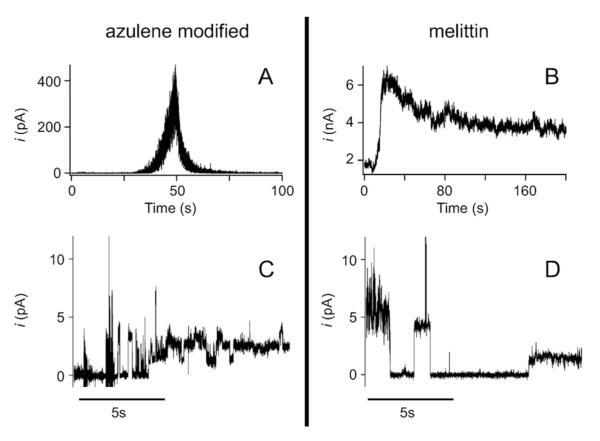Figure 6.
Electrophysiological characterization of pore formation – Pore formation kinetics and properties for azulene modified and wild type peptides in the bulk under a 60 mV applied transmembrane potential. (A) Bulk insertion of azulene modified peptide. At t = 5 s a 10 hPa backing pressure was applied for a period of ca. 30 seconds. In response to this pulse the transmembrane current increases exponentially with a time constant of (7.25 ± 0.01) s. At approximately t = 50 s, the current decreases with an exponential decay time of (2.38 ± 0.01) s. (B) Bulk insertion of wild type peptide. At t = 5 s a 50 hPa pressure pulse was applied for a period of 10 s. In response to this pulse the current increases with an exponential time constant of (0.90 ± 0.01) s and decreases with an exponential time constant of (27.8 ± 0.1) s. Both traces were digitally filtered with a low-pass 10 Hz Hanning filter for presentation purposes. (C,D) Typical current traces for individual azulene modified (C) and wild type (D) pores show discrete current steps that are similar in both cases. Both current traces were measured under a 60 mV applied transmembrane potential. Both traces were digitally filtered with a low-pass 10 Hz Hanning filter for presentation purposes.

